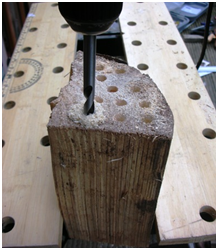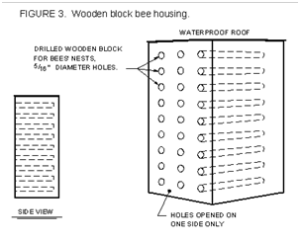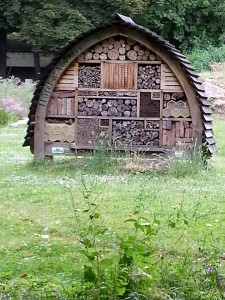By Darren (Plot 219)
We all want our plots to be as productive as possible, and pollination is a key part of this for many vegetables. With Spring and Summer approaching, now is the time to think about attracting bees to your plot to aid in pollination.
Bees play an essential role as pollinators in the garden. Without bees many of our vegetables and fruit would never get to harvest stage. So all your composting, fertilising, weeding and care can be wasted if your vegetables aren’t pollinated. The members of the pumpkin family provide classic examples – these all have separate male and female flowers and, unless the pollen gets carried from the male to the female, there’s no way the cucumber, zucchini, pumpkin etc. will develop from flowers to vegetables.
The solution is to plant lots of flowers in the garden to attract pollinators. Mixing flowers among the vegies not only adds colour, it helps to ensure that there are enough bees around to do the job – and they’ll be ready when your vegies flower.
So what should you plant? Bees seem to be attracted to yellow, blue and purple flowers. So some suggestions include sunflowers, lavender, nasturtiums and phacelia. Flowering herbs are great too – try planting borage, thyme, sage, basil chives and others and let some flower to aid in bee attraction. Not only will these attract bees to help pollinate your plot, they will look great too.
Another option is to make a native bee “house” which will encourage solitary native bees to nest in your plot and they will return the favour by helping pollinate your plants. The easiest method is to drill holes around 8mm diameter in a small block of wood, but you can also use short pieces of hollow bamboo, rolled bark or similar.
Native need are generally solitary and stingless, so should be no threat. And they are encouraged in place if European bees so should be safer to have around.
Main concern with a normal bee hive is the numbers, if they swarm or people get multiple stings, so this is a better option.
Further reading – Insect hotels – supporting biodiversity or just garden art?



